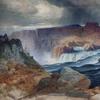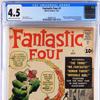'Andy Warhol. Dark Star' Is a Major Artist Survey to Premiere in Mexico City
- MEXICO CITY, Mexico
- /
- May 04, 2017

From June 2 to September 17, 2017, Museo Jumex will present the exhibition Andy Warhol. Dark Star. The first survey of its size to be organized in Mexico, the exhibition examines the first decade of Warhol’s artistic production moving from his fascination with mass consumer products to his obsession with the phenomenon of celebrity and tragic disasters. Curated by Douglas Fogle, the survey sets Warhol’s work against the backdrop of what magazine publisher Henry Luce proclaimed in 1941 to be the “American Century,” marking a period of more aggressive US intervention in global politics and the world economy. Seen in this context, Warhol’s art reflects the bright utopian promises and dark undercurrents of US consumerism and media culture during his own lifetime, while appearing newly relevant to today’s discussions about US imperialism in relation to Latin America.
Installed throughout the entire museum, Andy Warhol. Dark Star presents more than 150 works in media including painting, drawing, silkscreen, and film, as well as documentary materials. Highlights include works from Warhol’s crushed and torn Campbell’s Soup Can paintings; key works from the artist’s Disaster, Electric Chair and Most Wanted Men series; serial works of Marilyn Monroe, Elizabeth Taylor, Jacqueline Kennedy and Elvis; and iconic paintings of Mao Zedong. The museum’s ground floor will feature Silver Clouds [Warhol Museum Series], 1994 as well as archival materials from Warhol’s studio, The Factory. More than twenty Warhol films, including Empire (1964) and several from the Screen Test series, will be presented in the museum’s first floor gallery.

Eugenio López Alonso, President of Fundación Jumex, said: “In organizing this exhibition, we set out to achieve two goals: presenting, for the first time in Mexico, a substantial body of Warhol’s early work, and inviting visitors to reflect on the capacity of art to stimulate us to examine artworks and our own surroundings with a critical gaze.”
Julieta González, Artistic Director of Museo Jumex, noted: “At a time when the very principles sustaining democracy in the United States seem to be severely challenged by the results of the recent presidential election, the theme underlying the exhibition Andy Warhol. Dark Star presents itself as uncannily timely.”
Douglas Fogle explains that as early as the 1960s, Warhol had observed “the connection between stardom and the dark, cannibalistic impulses of a burgeoning media culture.” At the heart of the serial repetitions of products and famous personalities used by Warhol, “there is an acknowledgment of a culture in which adoration results in a kind of consumption. We devour and discard the icons that we love.”
He adds: “For Warhol a portrait of the American experience would be incomplete without a look at its dark side. […] Warhol himself might be seen to have been born under a dark star, his paintings an augury of the artist’s future fate at the hands of the media’s fascination with fame and tragedy.”
Andy Warhol. Dark Star is organized by Museo Jumex in collaboration with guest curator Douglas Fogle. Works on view have been lent to Museo Jumex by the Andy Warhol Museum, Albright Knox Art Gallery, Art Institute of Chicago, The Broad Foundation, Solomon R. Guggenheim Foundation, Hirshhorn Museum and Sculpture Garden, Los Angeles County Museum of Art, San Francisco Museum of Modern Art, Stedelijk Museum, Whitney Museum of American Art, as well as other museums and private collections.
EXHIBITION CATALOGUE
The exhibition is accompanied by a catalogue featuring commissioned essays, including Douglas Fogle’s commentary on the utopian promise and dark side of the American Century in Warhol’s early work; Geoff Dyer’s exploration of the notion of “disaster”; Kenneth Brummel’s analysis of Warhol’s images of Elvis; and Julieta González’s examination of the relationship between the American Century and Warhol’s work from a Latin American perspective.

The catalogue also includes a wide range of little-known yet important historical texts, such as Stuart Morgan’s essay “Andy and Andy, the Warhol Twins: A Theme and Variations,” originally published in issue number twelve of Parkett magazine in 1987.
Texts by artists whose work has been influenced by Warhol include Barbara Kruger’s “Contempt and Adoration,” published in the Village Voice on May 5, 1987; Richard Prince’s “Guns and Poses”; Thomas Hirschhorn’s “For the First Time (About Andy Warhol)”; and new texts by Kara Walker and Kerry James Marshall that cast light on Warhol’s use of images of events from the Civil Rights movement.
The exhibition catalogue is published by DelMonico Books-Prestel and Museo Jumex.
















